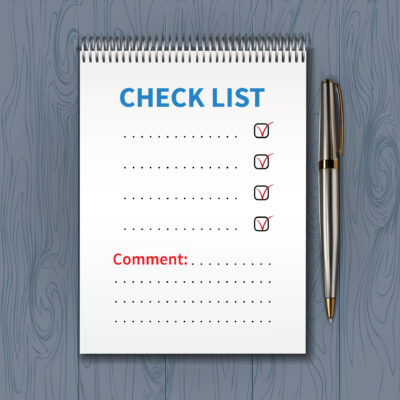Want to improve your company’s vibe and performance? Here’s a monthly checklist to boost organizational health, enhance productivity, and build a thriving small business team.
Keeping your organization healthy is not a one-time project. It needs steady attention and regular check-ins. A monthly review checklist helps spot both problems and opportunities early.
Let’s face it—running a small business can sometimes feel like juggling chainsaws blindfolded. I’ve been there. One month everything’s firing on all cylinders, and the next, it’s like your team forgot how to speak the same language.
That’s where organizational health comes in. It’s not just some buzzword consultants throw around—it’s the glue that holds your business together.
When your organizational health is strong, your people are aligned, communication flows like a mountain stream, and decision-making doesn’t feel like pulling teeth.
This article evaluates why organizational health is important for small businesses, provides a practical, easy-to-follow monthly checklist to keep things on track, and practical suggestions from someone who’s stepped on a few business landmines.
What is Organizational Health, Anyway?
Organizational health goes beyond financial performance. In plain speak: it’s how well your business functions from the inside out. Think of it as the immune system of your business—keeping everything aligned, resilient, and ready to roll with the punches.

When you’ve got good organizational health, you’ll see:
- Better employee engagement
- Stronger leadership effectiveness
- Clearer internal communication
- Higher team productivity
- A rock-solid corporate culture
Checking these on a monthly basis work like a routine wellness visit, letting you catch small issues before they become big headaches. And believe me, when those pieces are out of whack, it shows! People start clock-watching, meetings get tense, and turnover creeps up.
Why Small Businesses Can’t Ignore Organizational Health
Now, if you’re running a lean team (as most small biz owners are), you might think, “We’re too small to worry about stuff like this.” But here’s the truth: smaller teams feel misalignment even more. One weak link? Boom—the whole ship lists to one side.
I learned this the hard way when my four-person crew nearly mutinied after a messy product rollout. We hadn’t been doing regular check-ins, and miscommunication spiraled into finger-pointing. Had we focused on our company morale and team collaboration, we could’ve avoided the mess altogether.
Bottom line: Strong organizational health is your silent superpower. And the good news? You don’t need a massive HR department to maintain it.
7 Key Areas To Include In a Monthly Organizational Health Review Checklist
A good checklist keeps you thorough without making the process too overwhelming. Here are the core focus areas to look at every month to keep your organizational health in fighting shape. You don’t need to spend hours on this—just be consistent.
1. Revisit Your Core Values & Goals
Review both companywide and teamspecific goals to see what’s on track, which targets need attention, and if priorities have switched up. Are they still relevant? Do your people know what they are?
Good organizational health means your vision isn’t collecting dust in a drawer. Make it part of everyday conversations.
Sometimes, teams lose sight of main objectives as new work or distractions pile up. Checking on goal progress keeps efforts aligned.
2. Check the Pulse and Engagement of Your Employees
Use surveys or casual checkins to sense team energy, asking about workload, stressors, and recognition. Assessing if employees have easy ways to give and receive feedback helps prevent misunderstandings and frustration.
Low energy, rising absenteeism, or complaints about recognition can signal trouble. A monthly pulse survey or quick informal chats give me quick insight.
Scheduling 1-on-1s with each team member is a good approach although this might not always be ocassionally practically possible.
Ask open-ended questions: “How are you feeling about your workload?” or “Anything blocking your progress?”, and watch for changes in employee satisfaction or energy levels.
Pro tip: Create a shared doc where people can anonymously voice concerns or wins. It keeps your finger on the company morale pulse.
3. Review Communication Channels
Check if teams are sharing updates easily, if meetings are productive, and if any bottlenecks exist. If updates, expectations, or feedback don’t flow smoothly, confusion grows.
Watch for frequent meeting reschedules, missed tasks, or unclear handoffs as early warning signs. From software tools to staffing, look at whether teams have what they need, and if anything is underused or outdated.
- Are your tools working (Slack, email, task boards)?
- Is everyone clear on updates and goals?
If you hear, “Wait, I didn’t know about that,” it’s time to overhaul your internal communication strategy. Sometimes a tool, app, or piece of equipment gets forgotten, or people feel stretched too thin in other areas. Reviewing resource use regularly saves both money and frustration.
4. Audit Workflow & Efficiency
Review everyday workflows often reveals ways to reduce inefficiency or clarify roles. Focus on operational efficiency—ask the team what tasks suck the most and brainstorm how to streamline. Delays, repeated errors, or regular overtime usually mean workflows need review.
Look for bottlenecks or unclear steps, especially in crossteam work. Ask if systems are helping or hindering, or are there any bottlenecks or repetitive tasks that could be automated.
5. Recognize & Reward Wins
Don’t wait until the annual review. Celebrate small stuff monthly—shout-outs in meetings, quick thank-you emails, even a surprise coffee gift card. It fuels employee engagement and keeps company morale sky high.
6. Compliance & Risk Monitoring

Checking policy updates, training needs, or regulatory requirements reduces surprises down the road. Extra tip: Consider analyzing new risk factors as teams grow or technology updates roll in.
Regularly reviewing these areas makes sure your checklist doesn’t get stale, keeping it fresh and relevant every month.
Missing regulatory deadlines or overdue training sessions are usually easy to spot in a routine checklist before they become bigger issues.
7. Spot and Address Conflicts Early
Tiny tensions grow into team tumors if ignored. Stay proactive with conflict resolution—not reactive. Even a 10-minute chat can save you a world of grief later.
Leadership Habits That Strengthen Organizational Health
You can’t build a healthy organization if you’re not modeling it yourself. So here’s the part where I get real honest.
Early on, I tried to “be the boss” and bark orders. Guess what? My team tuned me out. Once I leaned into strategic leadership—listening more, asking for feedback, showing vulnerability—things changed fast.
Build these habits:
- Admit when you’re wrong (seriously)
- Share big-picture thinking to encourage business alignment
- Encourage team collaboration by asking for solutions, not just presenting problems
- Get input on big decisions—don’t surprise your team
Practical Step By Step: How To Use Your Organizational Health Checklist Each Month
Running a checklist works best as a regular habit, not just in response to issues. A review that doesn’t spark action is just busywork. I double check that each finding turns into a clear next step, with a person and timeline attached.
Celebrate Improvements – Not every review needs to become a troubleshooting mission. When you see positive trends, like better communication or stronger engagement, call these out and thank the team. Here’s how to walk through it:
- Schedule the Review: Pick the same time each month, blocking time in your calendar so it doesn’t get skipped or rushed.
- Gather Data: Before jumping in, collect updates on KPIs, meeting summaries, feedback survey results, and progress reports from across the organization.
- Run Through the Checklist: Go section by section, using concrete questions for each area. For example, “Are team goals clear for the next month?” or “Have there been any recurring process delays or rework?”
- Document Findings: After each section, write notes on strengths, red flags, and suggestions. Writing these down breeds accountability.
- Set Action Items: List followup steps for any issues, assign responsibilities, and pick deadlines so people know what to do next.
- Share Highlights: Summarize your findings for team leads or the whole company, depending on the situation. Sharing the review openly keeps everyone on the same page.
- Track Improvements Over Time: Comparing month to month notes helps reveal longer trends. Look for repeating problems or signs that specific changes are working.
Here’s an example of prompts you can use:
- What progress did we make on last month’s goals?
- What got delayed or changed, and why?
- Did any process or workflow cause repeated confusion or slowdowns?
- What feedback have we received from employees, clients, or customers?
- Has any regulation, compliance policy, or safety standard changed this month?
- Are any teams or individuals lacking the support or resources they need?
- What small wins or outstanding efforts stood out this month?
Consider switching up some questions quarterly to make sure the review process stays useful and fresh. For example, you might add questions about remote work effectiveness or new project tools if your organization is growing or adapting.
When to Rethink Your Organizational Structure
Sometimes, the problem’s deeper than morale—it’s the bones of the operation. If tasks fall through the cracks or people wear too many hats, take a hard look at your organizational structure.
Ask yourself: Is everyone clear on their role? Are tasks being delegated fairly? Does the structure support our goals—or slow us down?
Shifting roles or streamlining systems may just be the health boost your business needs.
Need Help? Contact BCINC for Assistance Now!Conclusion: Organizational Health Isn’t Optional—It’s Essential
Organizational health isn’t about adding fluff to your to-do list—it’s about removing friction, boosting team trust, and making your small business a place people love to work.
Building a habit of monthly organizational reviews helps me keep problems manageable and teams motivated. Using a checklist means nothing gets missed and growth continues, even when the calendar gets busy.
As each review builds on the last, I find it easier to spot small changes that lead to longterm strength and resilience in my organization.
By keeping up with this habit, organizations can adapt more quickly and keep teams both productive and engaged year round.
Want help setting up your monthly team check-in template or finding easy wins for improving organizational health? Drop a comment or reach out—I’ve probably made the mistake you’re trying to avoid.
Related Articles
9 Tip To Do List to Boost Morale Fast: How to Improve Team Communication
FAQs About Organizational Health
How do I know if my business has poor organizational health?
Look for signs like high turnover, miscommunication, missed deadlines, and low morale.
How often should I assess organizational health?
Monthly is ideal for small teams. It keeps issues small before they become big problems.
How long should a monthly review take?
Setting aside one or two hours each month usually works for me, though larger teams might need longer. The important part is keeping it focused and actionoriented so it doesn’t drag on into a frustrating meeting.
What’s the difference between a monthly health review and a performance review?
Performance reviews focus on individual goals and achievements. Organizational health reviews are about team processes, morale, and the overall climate. Both are valuable, but the monthly review helps prevent issues that can impact a whole organization, not just specific people.
How can I share findings without overwhelming the team?
Choose two or three key takeaways each month and explain what will change next. Transparency is helpful, but too much information at once can cause confusion or worry.

